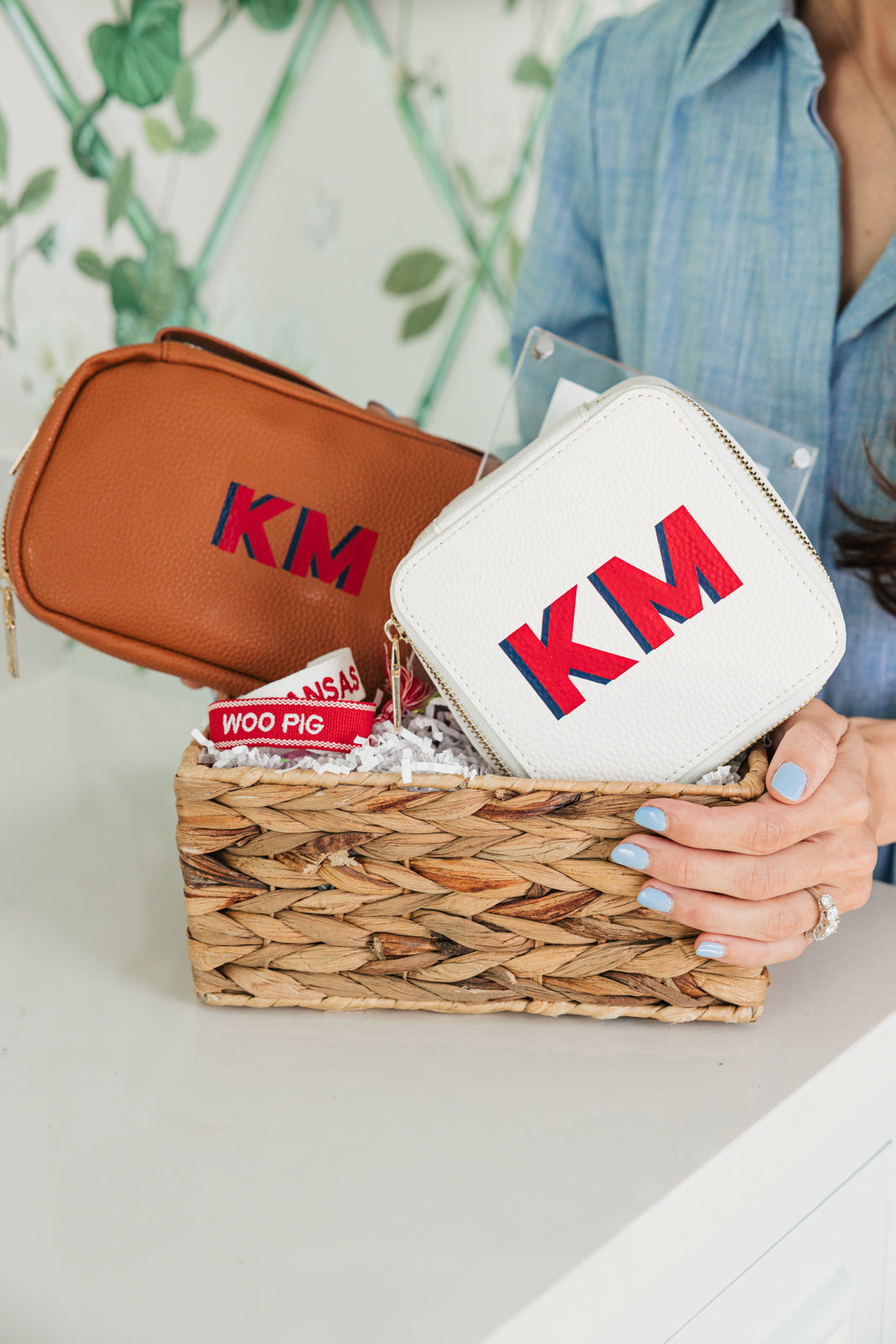Your Cart is Empty
Current Production Time: 5 Business Days
FREE SHIPPING OVER $75
Current Production Time: 5 Business Days
FREE SHIPPING OVER $75
Current Production Time: 5 Business Days
Current Production Time: 5 Business Days
FREE SHIPPING OVER $75
Current Production Time: 5 Business Days
FREE SHIPPING OVER $75
Current Production Time: 5 Business Days

Our bestsellers are now available with appliqué—plus, don’t miss new canvas pouches!
Shop now
Serve shade and style in the bestselling Monogram Visor!
SHOP NOW
Our bestselling favorites just got a spring refresh with three gorgeous new patterns.
Start Customizing
Spring break, summer vacations, and poolside lounging just got an upgrade!
Shop Now
Cheers to warmer weather and custom drinkware
Shop Now
Shop personalized gifts for all the upcoming events like Teacher Appreciation, Mother's Day, Graduation and more!
Shop Graduation
Spring gifting just got an upgrade with our new acrylic items.
Shop Now
This hat is everywhere but we’re the ONLY place making it custom!
Shop NowMarch 25, 2025 3 min read
Mahjong, a game steeped in rich cultural heritage, has captivated players worldwide for centuries. Originating in China, this intricate tile-based game combines strategy, skill, and a touch of luck. For newcomers, the array of unique terms and concepts can be daunting. However, mastering Mahjong lingo is essential for enhancing gameplay and engaging confidently with fellow enthusiasts.
Understanding the foundational elements of Mahjong is the first step toward fluency in its terminology.
Tiles: A standard Mahjong set comprises 144 tiles, categorized into suits and honor tiles
Bamboo (Suo Zi Pai 索子牌): Depicted by sticks resembling bamboo stalks.
Characters (Wan Zi Pai 萬子牌): Marked with Chinese characters representing numbers.
Dots (Tong Zi Pai 筒子牌): Illustrated with circles symbolizing coins.
Honor Tiles:
Winds: East (東), South (南), West (西), and North (北).
Dragons: Red (紅中), Green (發財), and White (白板).
Sets: Players aim to form specific combinations:
Pung (Pong): A set of three identical tiles.
Chow (Chi): A sequence of three consecutive tiles in the same suit.
Kong (Kang): A set of four identical tiles.
Pair: Two identical tiles, essential for completing a winning hand.

Familiarity with key terms enhances both understanding and enjoyment of the game
Pung (碰): Forming a set of three identical tiles. For example, three 'Bamboo Five' tiles constitute a Pung.
Chow (吃): Creating a sequence of three consecutive numbers within the same suit, such as '3, 4, 5' in Dots.
Kong (槓): Assembling four identical tiles. Declaring a Kong allows a player to draw an additional tile from the wall.
Pair: Two identical tiles, serving as the fundamental building block of a winning hand.
Melded vs. Concealed Sets:
Melded: Sets formed using a discarded tile from another player, which must be declared openly.
Concealed: Sets completed solely with tiles drawn by the player, remaining hidden until declaring Mahjong.
Grasping gameplay-specific terms is crucial for smooth participation:
Draw: Taking a tile from the wall (the stack of tiles).
Discard: Removing a tile from your hand and placing it in the discard pile.
Call: Claiming a discarded tile to complete a set.
Mahjong: Declaring a complete and winning hand.
Understanding scoring terminology is vital for strategic play:
Doubles: Multipliers that increase the score of a hand.
Limit Hand: A hand that achieves the maximum point value.
Ready Hand (Tenpai): A hand that is one tile away from winning.
Beyond terminology, appreciating the game's strategies and etiquette enriches the Mahjong experience:
Defense: Implementing strategies to prevent opponents from winning, such as careful tile discards.
Tempo: Maintaining a consistent pace during play to keep the game engaging for all participants.
Respect: Observing proper etiquette, such as handling tiles gently and refraining from unnecessary chatter.

Personalizing your Mahjong setup can elevate both functionality and aesthetic appeal:
Personalized Mahjong Accessories: Customizing Mahjong sets and accessories, such as monogrammed tile cases or embroidered table covers, adds a unique touch to your gaming sessions.
Sprinkled With Pink's Offerings: Products like the Embroidered Terry Pouch are perfect for storing Mahjong accessories in style.
Immersing oneself in the language of Mahjong not only enhances gameplay but also deepens appreciation for this timeless game. By familiarizing yourself with essential terms and integrating personalized accessories, you can enrich your Mahjong journey. We invite you to share your own Mahjong stories or favorite terms in the comments section below.
Sign up to get the latest on sales, new releases and more …











